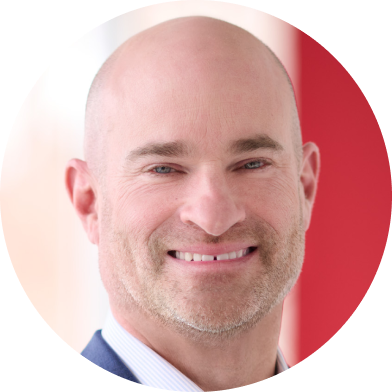Research summary
A sneak peek at How America Saves 2025
April 22, 2025
For more than two decades, Vanguard’s How America Saves report has highlighted the strides retirement plan sponsors have made toward enhanced plan design and improved participant behaviors. “The progress is remarkable—and for that we’d like to say ‘thank you’ to our plan sponsors,” said lead author Jeff Clark, previewing the results featured in the 2025 issue. “The data in How America Saves are really a reflection of the actions and decisions that our clients have made.”
This Q&A with Clark, Vanguard’s head of defined contribution research, offers a look ahead at this year’s report, which will be released in June.
What is the key takeaway from the preview of this year’s How America Saves report?
The most important thing that a plan sponsor can gain from this year’s edition of How America Saves is that plan designs continue to improve, and they are leading to better participant outcomes. We’ve made a lot of progress, but there is still more work to be done. How quickly can participants reach a total annual savings rate of 12%–15%, which is Vanguard’s recommended combined savings rate? That is a key question for plan sponsors.
How much progress are plan sponsors and participants making in improving combined savings rate of employer and employee contributions?
We’re observing some really significant trends in both plan design and participant behavior. For instance, 61% of all plans now feature autoenrollment, and among those plans, more than 60% have default contribution rates of 4% or higher.
Forty-five percent of participants also increased their deferral rate in 2024, either on their own or as part of an automatic annual increase. That’s an all-time high since we started tracking that metric in 2019.
Can you also talk about the automatic default contribution rate for participants, and how it affects long-term retirement savings?
The typical worker changes jobs every four years or so, which makes it incredibly important for autoenrollment plans to have a strong default contribution rate—ideally at least as high as the employer match rate. This ensures that workers automatically receive the full value of the employer match and are less likely to be reset to a lower savings rate when they change jobs.
As more plans are offering autoenrollment, we’re seeing record-high participation rates. For example, in the previous How America Saves report, the average plan participation rate was 85%. That's a significant shift from 20 years ago, when about one in three workers didn’t save for retirement at all. As a result of these autoenrollment plans, employees at firms that offer them are saving roughly 65% more for retirement compared with those at firms with voluntary enrollment.
We have also found that when we look at the account balances of autoenrolled participants who have been with their plans for 10 years or more, their median balances are about 60% higher than those in voluntary enrollment plans. This is largely because autoenrolled participants have been saving from their very first year with their company.
Further, when participants are autoenrolled in a plan with an automatic increase feature, they typically save about 20%–30% more within three years compared with participants who are only autoenrolled.
How are professionally managed accounts making a difference?
Participants are increasingly relying on target-date funds and other professionally managed allocations, which really improves their portfolio construction. Professionally managed portfolios have helped create well-diversified, age-appropriate allocations for more plan participants, and they have drastically reduced the number of participants with extreme equity allocations—like 0% or 100%, for example—from about a third of participants 20 years ago to only 7% of participants now.
Professionally managed allocations have also been doing an amazing job of helping participants stay on track. In fact, in 2024, only 1% of pure target-date fund investors made a trade during the year.
How might plan sponsors help employees prepare for financial emergencies?
We did see a relatively small increase in hardship withdrawals in 2024. While making a hardship withdrawal is not ideal, for a small subset of workers facing financial stress, it can serve as a necessary safety net.
We know employees have many competing financial priorities and saving for retirement is just one of them. Managing student loans, health care savings, credit card debt, and emergency savings goals, to name just a few, can be complex for many workers. Plan sponsors can help support their employees with a cost-efficient, high-quality advice offer as well as a platform that provides employees guidance on their financial well-being.
As market conditions shift, how should participants approach retirement savings?
It is important for participants to remember to focus on what they can control, which is, primarily, a combination of cost and how much they are saving and spending.
We’ve hit a record high with 67% of participants opting for professionally managed allocations like target-date funds or managed accounts. These options have helped improve age-appropriate equity allocations and encouraged participants to stay the course. Investing in these well-diversified accounts can really help participants maintain a long-term view.
Notes:
All investing is subject to risk.
Investments in target-date funds are subject to the risks of their underlying funds. The year in the fund name refers to the approximate year (the target date) when an investor in the fund would retire and leave the workforce. The fund will gradually shift its emphasis from more aggressive investments to more conservative ones based on its target date. An investment in target-date funds is not guaranteed at any time, including on or after the target date.

